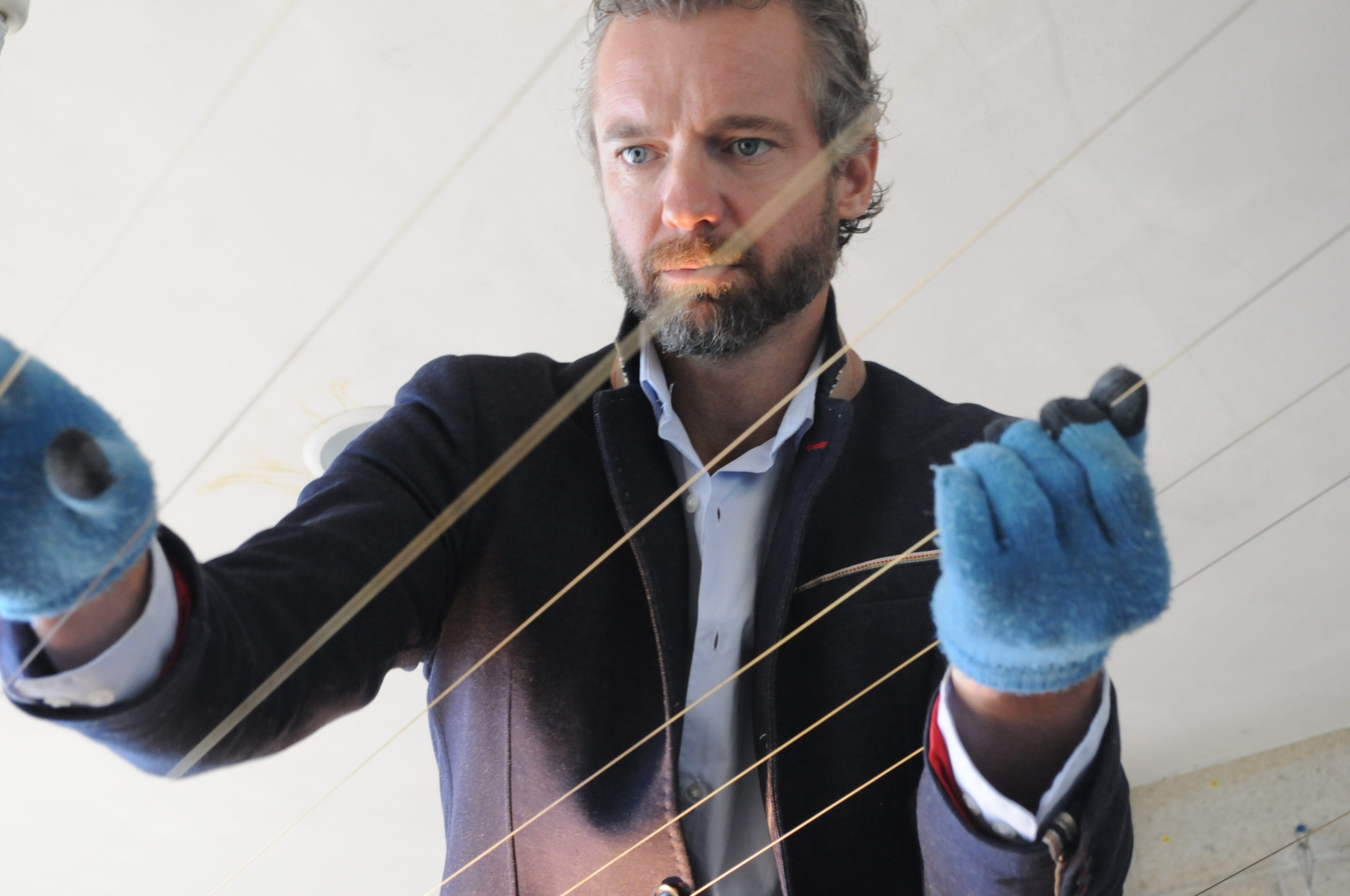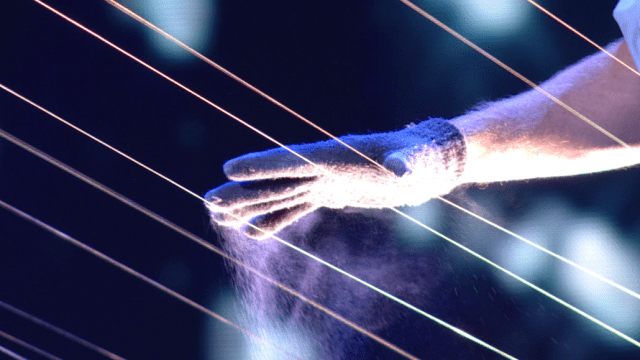Nestled on a Malibu hillside, three miles up a corkscrew-like road from the Pacific Coast Highway, sits a very peculiar house. Protruding through a missing window in the basement are 18 brass strings, tethered to a mountain 30 yards away. And at any time of day, you might hear their haunting vibrations echoing on the canyon walls.
Essentially the house is a giant instrument — the chamber made from marine-grade plywood rests inside; the strings attach to the nearby cliff — designed and played by musician William Close. He calls it the Earth Harp.
You might have seen Close on America’s Got Talent last fall when he strung his Earth Harp up over the audience and teased songs out of it using only his gloved fingers. He’s installed similar site-specific versions of the Earth Harp at dozens of locations, from the Space Needle to a temple in India, Burning Man to the New York Public Library — all of which he built himself.
In fact, in addition to serving as the resonator of his harp, Close’s home studio is like the laboratory of a mad, Steampunk scientist, where he has built hundreds of instruments from materials as mundane as Ikea mixing bowls and as exotic as a gourd pipe from Shanghai. “The first instrument I ever made was the exhaust pipe harp,” Close laughs. “The fact that it was so great-sounding was what made me pursue making more music.”
It’s here at his home, using his permanently installed Earth Harp, that Close recorded his newest album, Behind the Veil. And it’s also where his collaborators from Antelope Audio got to play around with a new mastering device that’s able to bridge the analogue-digital divide using revolutionary technology — an embedded atomic clock.
When Marcel James, the mastering engineer at Antelope, initially heard the audio from Close, he didn’t understand exactly how the music had been generated. Was it a cello? A violin? He Googled Close’s name and was stunned by what he saw. “There’s no other instrument on the planet that creates these tones,” he told me. “Lots of modern music is computer-generated — this is a fully organic instrument so you can’t ignore the air that the space is performed in.”
Any recording or mastering device is plagued with the challenges of “chasing tape” — trying to reproduce the fidelity of analogue using digital methods. The Earth Harp was recorded with four dynamic microphones: Two inside the chamber and two on the strings. But those analogue highs and lows which Close captured are notoriously hard to digitize. To pull out the full range of the Earth Harp’s nuanced undertones and delicate frequencies, James used Antelope’s gorgeous Rubicon Atomic AD/DA Preamp, which is aided by an insanely high sampling rate but also has a secret weapon: a rubidium atomic clock that’s reported to be 100,000 times more accurate than the crystal oscillator found in most studios.
While atomic clocking is being embraced by some in the music industry, it’s mostly being used for scoring high-budget blockbuster films (Avatar, for example), where precision and quality might matter enough for the hefty price tag. Not all are convinced of the atomic clock’s benefit: As a musician friend described it to me, it’s like using a diamond to cut your tomatoes — it works damn well, but could never be worth the investment, especially when your audience is listening in an increasingly Earbud and Jambox world.
But James believes that Antelope’s technology can help preserve the architectural effect of the Earth Harp. “You can hear the sound three-dimensionally,” he says.

Standing beneath Close’s Earth Harp as he plays it, I think I can actually feel what James is talking about — it’s almost as if the air is heavy with sound. Those are actually the thick, chunky soundwaves that I’m feeling, says Close, drawing the various waves in the air for me. And that’s what’s he thinks is not only reproduced, but enhanced, by Antelope’s tech.
“One of the things I love is about this is that it’s an electro-acoustic experience,” says Close, holding his hands close to the still-vibrating strings. “There’s an alchemy to it. When I heard the recordings after Marcel had worked on them with the Antelope gear, there was also this kind of magic to them, a quality to the sound — it’s like an energy.”
Judge for yourself by listening to his version of The Who’s “Love, Reign O’er Me.” You can buy Close’s album Behind the Veil, out on iTunes now.
